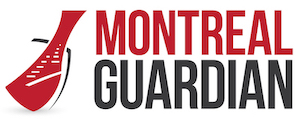Relocating a business can symbolize growth, downsizing, or searching for a more suitable space. However, it may come with some risks. For example, it can disrupt work, productivity, and sales. Plus, there’s the potential of losing or misplacing important files or damaging fragile items like laptops can add to the stress.

To mitigate these challenges, adopting effective strategies is important. Proper planning and execution can maintain operations smoothly and minimize stress for everyone involved. In this guide, we’ll provide essential office moving tips to help you manage this process efficiently.
Let’s begin.
Planning Phase
For a successful move, it’s essential to have clear objectives from the outset. Here are some helpful tips for office relocation when starting out with a corporate transition:
- Cost savings: Will the move cut expenses? Review the plan to see if it reduces rent, utilities, or other costs.
- Improved facilities: Does the new place offer better amenities? Check if it suits your business needs, including infrastructure and accessibility.
- Growth potential: Can the new space accommodate your team and planned future expansion?
- Logistics benefits: Consider practicalities like proximity to clients, suppliers, and transportation hubs for smoother operations.
Logistics and Coordination
Efficient organization is a component of moving an office tips. It cuts downtime and prevents disruptions.
Hiring Professional Movers vs. DIY Approach
When planning your office move, you must decide between hiring experts like Calgary office movers or organizing a DIY move.
Professional Movers Advantages
- Efficiency: Professional movers have the experience and resources to handle the move quickly. They also know all the safety tips for moving an office successfully, on time, and without stress.
- Insurance: Most moving companies offer insurance, providing peace of mind against potential damages.
- Less stress: Delegating the moving tasks to professionals lets you focus on running your business.
Professional Movers Disadvantages
- Cost: Professional moving services are more expensive than DIY, especially for long-distance moves or large offices. This may not fit into tight budgets.
- Less control: You might have less control over the process and timing, which might concern some managers.
DIY Advantages
- Cost savings: A DIY is cheaper; you only need to rent a truck and buy packing materials.
- Control: You have complete control over the schedule and handling of items.
DIY Disadvantages
- Time-consuming: Significant time and effort is required for packing, loading, and unloading.
- Risk of damage: Without professional handling, there’s a higher risk of damaging office equipment.
- Stressful: There is a high potential for increased stress and reduced productivity during the move.
Managing Equipment and Furniture
- Inventory: Create a detailed inventory of all office equipment and furniture. This will help you keep track of items during the move.
- IT coordination: Ensure IT professionals are available promptly to set up computers, servers, and other tech equipment.
- Disassembly: To facilitate transportation, disassemble large furniture and equipment. Ensure all items are properly secured to prevent damage.
- Prioritize critical equipment: Set up essential items like servers and workstations first to maintain business continuity.
- Create a floor plan: Map out the new office layout in advance to ensure furniture and equipment are correctly placed upon arrival.
- Moving schedule: Schedule the move during off-hours or weekends to avoid business disruptions.
Packing and Labeling
Packing and labeling your office efficiently can significantly ease the moving process and minimize disruptions.
Organizing Supplies and Materials
- Use high-quality packing materials. You’ll need sturdy boxes, packing tape, bubble wrap, and markers.
- Create dedicated packing stations in different areas of the office. Each station should have a variety of supplies and clear instructions on packing procedures.
Labeling Systems for Efficiency
- Develop a detailed packing list for each box, specifying its contents, destination within the new office, and any handling instructions.
- Clearly label each box with its contents and designated location.
- Maintain consistency in labeling throughout the packing process to avoid confusion.
Handling Sensitive or Fragile Items
One of the most important safety tips for office moves is to handle sensitive or fragile items with extra care to prevent damage or loss.
- Secure transportation: Ensure fragile items are securely packed and labeled as “Fragile.” Consider using custom crates or boxes for added protection.
- Insurance coverage: Verify insurance coverage to protect against any potential damage or loss of fragile items during transit.
Coordinating with Movers
Provide movers with a detailed floor plan of the new office. Mark where each piece of furniture and equipment should go. Use color-coded labels on items to match designated areas on the plan. Communicate specific instructions for handling delicate or high-value items. Assign a team member to be on-site during the move. They can help guide the movers and answer any questions.
Post-Move Settling In
Encourage staff to help where needed to make settling in easier after a move. Here are some office moving tips for employees.
- Assign tasks. Delegate responsibilities to employees for unpacking and setting up specific areas or departments.
- Provide clear instructions. Ensure everyone understands their roles and where items should go in the new office layout.
- Encourage teamwork. Foster employee collaboration to streamline the unpacking process and create a sense of ownership in the new space.
Moving your business is a major task. However, it can be handled efficiently with careful planning and these office relocation tips. Stay organized, involve your team, and seek expert help when needed.
